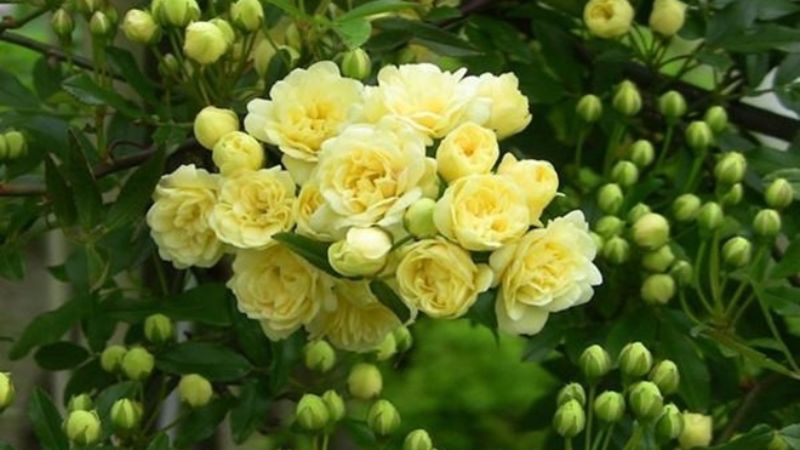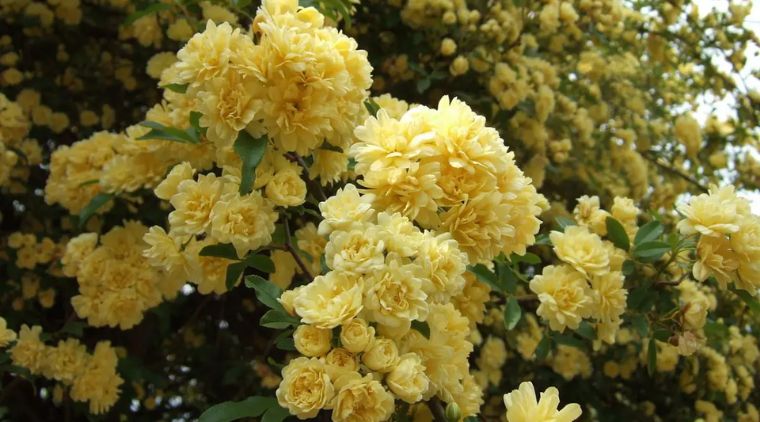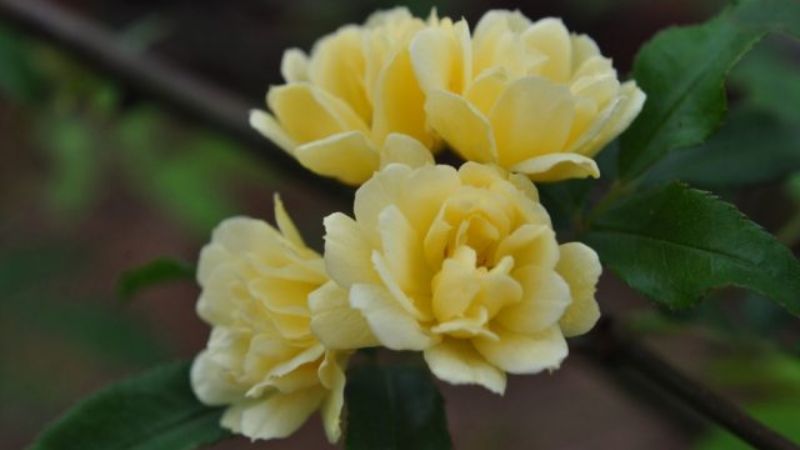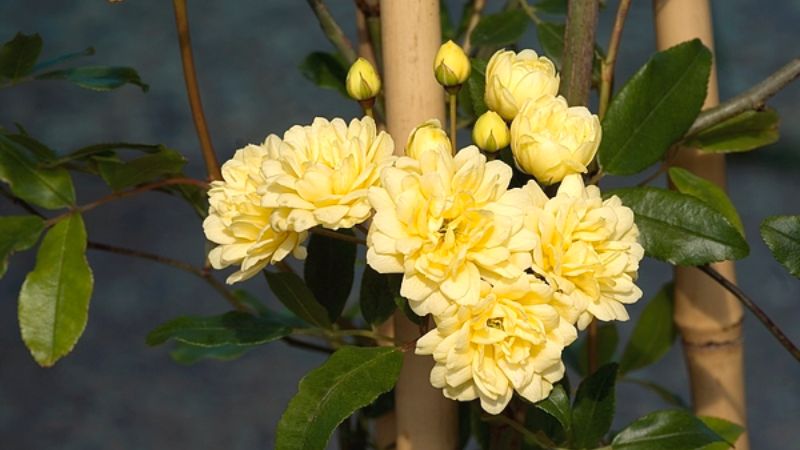The Rosa Banksiae rose is a popular choice for homeowners looking to add a touch of beauty to their gardens. This rose variety is perfect for balconies and patios, offering a delightful fragrance and simple elegance.
1 What is the Rosa Banksiae Rose?
The Rosa Banksiae was first discovered in England in 1824 by the Royal Horticulture Society. It boasts a unique pale yellow hue and a subtle violet-like fragrance.
 Rosa Banksiae
Rosa Banksiae
This rose variety was named after English botanist Joseph Banks, who introduced it to Europe from China in the late 18th century.
2 Characteristics of the Rosa Banksiae Rose
The Rosa Banksiae rose is a wild rose species and a climbing plant that can reach impressive lengths of 455-610cm at maturity. It has few or no thorns, and its leaves are a deep green and narrow, similar to other rose varieties.
 Rosa Banksiae in bloom
Rosa Banksiae in bloom
Rosa Banksiae thrives in cool, shaded areas and prefers outdoor spaces that are not too sunny. It grows best in temperate climates and is often found in these regions. As a climbing plant, it is commonly grown on fences, trellises, or allowed to climb up the trunks of other trees. It can reach heights of 4-5 meters with its many branches and dense foliage.
 Rosa Banksiae climbing a fence
Rosa Banksiae climbing a fence
The flowers of the Rosa Banksiae are small and grow in large clusters of 15-30 blooms, each with 17-25 petals. They exude a delicate violet fragrance and typically bloom in spring or summer.
 Rosa Banksiae flower clusters
Rosa Banksiae flower clusters
3 The Significance of the Rosa Banksiae Rose
Each flower carries a unique meaning, and the Rosa Banksiae rose is no exception. It symbolizes sweetness and everlasting love. Planting this rose in your balcony or garden is believed to foster a sense of sweetness and affection within the home.
 Sweetness and love symbolized by the Rosa Banksiae rose
Sweetness and love symbolized by the Rosa Banksiae rose
4 How to Grow and Care for the Rosa Banksiae Rose
Planting the Rosa Banksiae Rose
When planting the Rosa Banksiae rose, it is essential to consider light, temperature, and the type of plant.
Light:
Rosa Banksiae roses thrive in natural light, so choose a spot in your garden that receives ample sunlight to encourage their growth and abundant blooming.
Provide a trellis, fence, or balcony railing for the plant to climb and spread out. However, keep in mind that Rosa Banksiae does not tolerate harsh sunlight, so its growth may not be as vigorous as other climbing plants.
 Rosa Banksiae in a sunny spot
Rosa Banksiae in a sunny spot
Plant Type:
When planting Rosa Banksiae roses, consider the time of year. For plants set in the ground from October to December, trim the branches to a moderate length and remove any weak shoots. Conversely, for spring planting (March to May), leave one outward-facing bud and cut away one-third of the roots. Avoid planting from seeds, as this can result in weak and underdeveloped plants.
 Planting Rosa Banksiae roses
Planting Rosa Banksiae roses
If you’re planting cuttings, soak them in water for 2-3 hours before planting. Protect the cuttings from intense sunlight by covering them with damp material. Dig a deep hole and bury the cutting so that about three fingers’ width of the stem is underground. Fill the hole with a mixture of soil and organic fertilizer, and firmly press the soil around the roots. Gently water the plant to settle it in.
 Rosa Banksiae cutting
Rosa Banksiae cutting
Caring for the Rosa Banksiae Rose
Rosa Banksiae roses thrive in sunny conditions, so during dry seasons, water them each morning. Avoid wetting the leaves and flowers to prevent the growth of harmful fungi. In rainy seasons, reduce watering to twice a week, ensuring the soil remains moist.
Use well-aerated soil and organic fertilizer in the spring, ensuring it contains nitrogen, phosphorus, and potassium to promote flowering. However, avoid nitrogen-rich fertilizer in July and increase potassium in September to encourage wood formation.
 Using nitrogen and potassium-rich fertilizer
Using nitrogen and potassium-rich fertilizer
For Rosa Banksiae climbers, prune small branches and deadhead spent flowers to encourage new growth. Remove faded flowers by cutting back to about 2-3 leaf nodes. Also, thin out any auxiliary buds to prevent stunted growth.
This information about the Rosa Banksiae rose, including its characteristics, benefits, and detailed care instructions, should provide you with all you need to know to successfully grow and enjoy this beautiful flower.
“How to Keep Fresh Flowers Arranged for Up to 3 Days Without Overwatering”
It’s almost that time of year again – Tết! As you adorn your home with gorgeous and vibrant flowers, you may be wondering: how do I make sure they stay fresh for as long as possible? If you’re not familiar with the right care techniques, your flowers can fade and start to wilt in as little as one or two days. Don’t worry though, we have some tips here to help keep your flowers looking beautiful for the duration of the festive season!






































